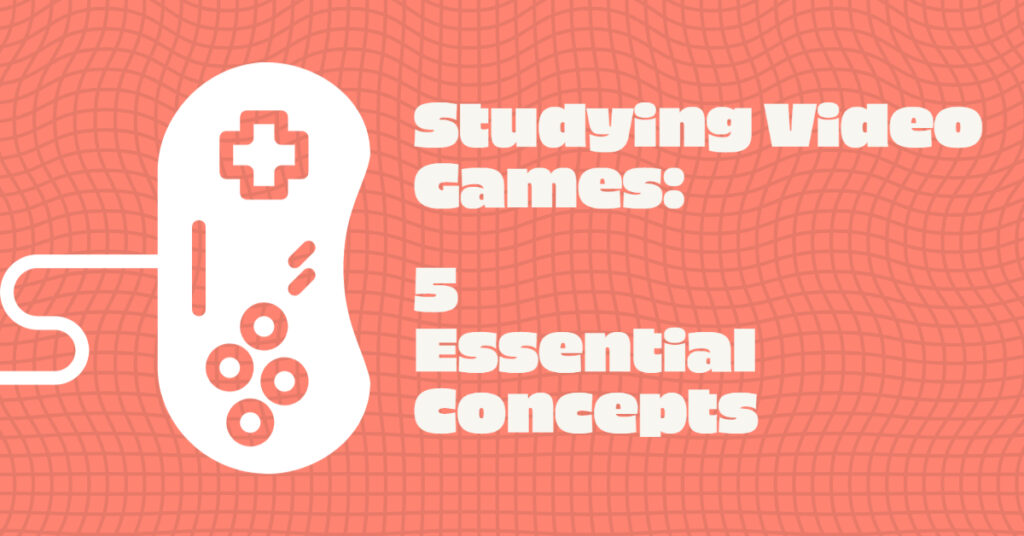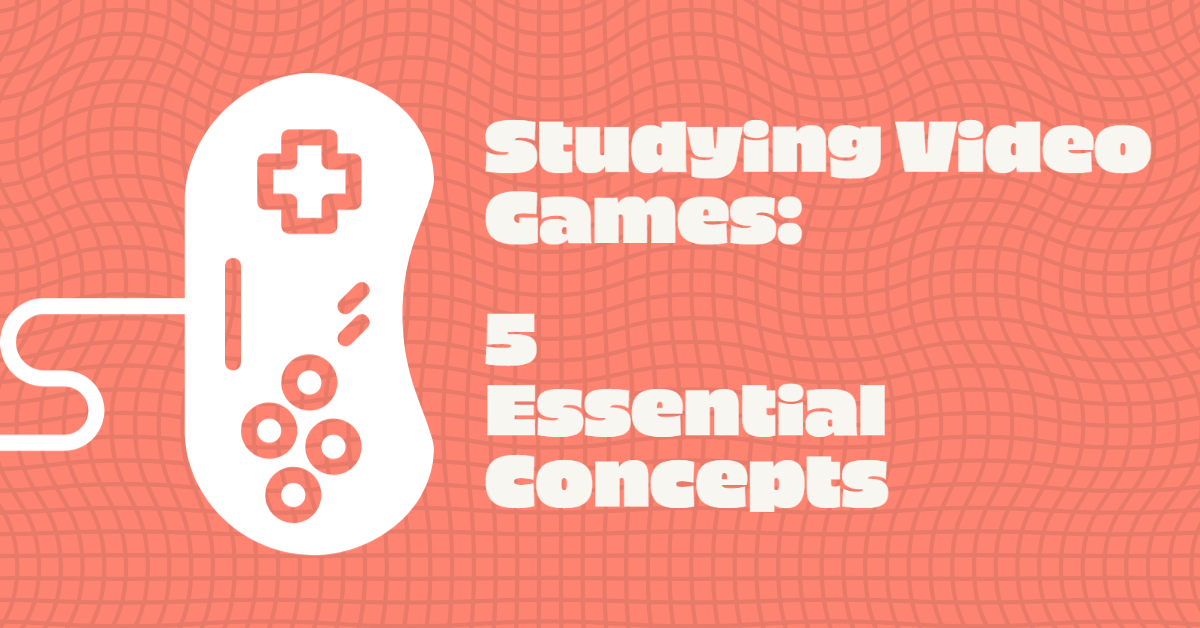5 Essential Concepts for Studying Video Games
Give your gadgets a new life.

At Gadget Salvation, our mission is to contribute to the electronics reselling market as much as possible so that we extend the life of our gadgets and diminish waste. Our process is simple and seamless.
Answer a few questions and get an estimate.
Ship your gadget for free.
Get paid within two business days of our receiving your gadgets.

Video games have become a dominant force in the entertainment industry, with millions playing them daily. As the industry grows and evolves, so does the need to study and understand video games.

So, without further ado, here are five essential academic concepts to get started with studying video games.
Narratology vs. Ludology
Narratology and ludology are two competing approaches to studying video games. Narratology focuses on the story and narrative elements of games, while ludology focuses on the mechanics and gameplay aspects. Proponents of narratology argue that video gaming is a form of interactive storytelling and that analyzing the narrative elements of a game is crucial for understanding its meaning and impact. They believe that the story and characters of a game are what draw players in and keep them engaged. On the other hand, ludologists argue that games are fundamentally different from other forms of media and should be analyzed on their own terms. They believe that the gameplay mechanics and systems are what makes games unique and that understanding how players interact with those mechanics is the key to understanding games. While both approaches have their merits in isolation, most critics will argue that a combination of the two is necessary for a complete understanding of video games. Ultimately, the approach taken will depend on the specific game being analyzed and the research question at hand.
Ludonarrative Dissonance
Ludonarrative dissonance is a term coined by game designer Clint Hocking to describe a disconnect between a game’s narrative and its gameplay mechanics. This can occur when the actions and motivations of the player-controlled character conflict with the story being told in the game.
For example, a game might have a story about a character who is supposed to be a hero, but the player’s actions in the game could involve committing acts of violence or stealing from innocent characters. This can create a dissonance between the player’s experience of the game and the intended narrative, making it more difficult for players to become fully immersed in the story.
Ludonarrative dissonance can be a challenge for game designers, who must balance the need for engaging gameplay mechanics with a cohesive and compelling narrative. Some designers address this issue by creating mechanics that reinforce the story and character motivations, while others opt for more open-ended gameplay that allows players to create their own narratives within the game world.
Ultimately, the success of a game’s narrative and gameplay will depend on how well these elements are integrated and complement each other. Ludonarrative dissonance can be a stumbling block, but with careful planning and design, it can be avoided or even turned into a strength.
MDA – Mechanics, Dynamics, Aesthetics
MDA (Mechanics, Dynamics, Aesthetics) is a framework developed by Robin Hunicke, Marc LeBlanc, and Robert Zubek as a way of analyzing and designing video games. The framework divides games into three distinct components: mechanics, dynamics, and aesthetics.
Mechanics refer to the rules and systems that govern gameplay, such as controls, physics, and objectives. Dynamics refer to the emergent behaviors that result from the interaction of the player with the mechanics, such as the strategies and tactics players develop in response to the game. Aesthetics—not to be confused with style—refer to the overall experience of playing the game, including the emotions, moods, and themes that are evoked. Hunicke et al. conceived of this framework as a waterfall, where mechanics affect dynamics which, in turn, affect aesthetics.
By breaking games down into these components, the MDA framework provides a common language for game designers and researchers to analyze and discuss games. It can also be used as a tool for game design, allowing designers to focus on specific aspects of the game and ensure that they are working together to create a cohesive and engaging experience for players.
This can be useful for designers, as it provides a framework for identifying why certain features, player behaviors, and emotional responses emerge—allowing designers to create effective systems for their games.
Procedural Rhetoric
Ian Bogost’s concept of procedural rhetoric is the idea that video games are not only a medium of entertainment but also a means of persuasion. According to Bogost, the gameplay mechanics of a video game can be used to convey a specific argument or point of view to the player.
Procedural rhetoric operates on the idea that the rules and mechanics of a game can be seen as a type of language that is unique to video games. This language can be used to express ideas and beliefs and can be just as powerful as more traditional forms of rhetoric, such as written or spoken language.
By using gameplay mechanics to convey a specific argument, game designers can create a more immersive and engaging experience for players, who may be more likely to accept or internalize the message being conveyed. However, this also raises ethical concerns about the use of games for propaganda or other forms of manipulation.
Overall, the concept of procedural rhetoric has opened up new possibilities for the use of video games as a means of communication and persuasion and has sparked important discussions about the role of games in society.
Gamification
Games and gamification are two related but distinct concepts. Games are interactive experiences designed to entertain and engage players, often with a focus on competition, challenge, and reward. Gamification, on the other hand, is the use of game elements and design principles in non-game contexts to motivate and engage users.
While games are often designed as standalone experiences, gamification is used to enhance existing activities or processes, such as education, fitness, or marketing. For example, a fitness app might use gamification elements like points, badges, and leaderboards to encourage users to exercise more regularly.
By understanding games, we better understand the mechanisms behind gamification, which, in turn, ensures we can use it for good—not ill.
Video games are a fascinating and complex form of entertainment that requires a multidisciplinary approach to study and analysis. By understanding these concepts and more researchers, academics, critics, and designers can gain a deeper understanding of how video games work and how they affect players and society as a whole.
If all this has left your head in a spin, why not unwind with a game of relaxing game like Minecraft? Speaking of which, you can buy Minecraft Hypixel coins, alongside most in-game currencies, at a discount through Eldorado.gg.

Give your gadgets a new life
At Gadget Salvation, our mission is to contribute to the electronics reselling market as much as possible so that we extend the life of our gadgets and diminish waste. Our process is simple and seamless.
Answer a few questions and get an estimate.
Ship your gadget for free.
Get paid within two business days of our receiving your gadget.


